Hokkaido pumpkins are among the most popular edible pumpkins, along with butternut squash, patty pan squash, nutmeg pumpkin or musk pumpkin (also known as the "long pumpkin from Naples"). The skin of the comparatively small Hokkaido pumpkins (the little ones from the giant pumpkin) can be eaten and the raw pumpkin flesh can also be eaten.
Use in the kitchen:
The flesh of the Hokkaido pumpkin has a nutty aroma, similar to the sweet chestnut. Although the Hokkaido pulp contains hardly any noticeable fibers, it has a stable consistency. Most recipes for butternut squash can also be made with the Hokkaido pumpkin.
General: In addition to the preparation of cream soups, stews, salads, casseroles, cakes (pumpkin pie), pastries, compote, jam, pumpkin seed pesto or juice, the pulp can be frozen raw or pickled in a sweet and sour sauce.
Pumpkin flesh: The Hokkaido pumpkin variety adapts to many flavors, but goes particularly well with ginger and chili. Like other pumpkins, Hokkaido pumpkins are very suitable for soups. The flesh of the Hokkaido pumpkin can also be used in casseroles or with various vegetables. The flesh of the Hokkaido pumpkin can be eaten raw and also tastes good in salads. 1
Kernels: The kernels or seeds of the Hokkaido are dried. Hokkaido kernels can then be sown or eaten. The thickness of the kernel shell varies, which means that the kernels are not always tasty.
Peel: Unlike many other pumpkins, the peel (skin, outer skin) of the Hokkaido pumpkin variety can be eaten because it is soft after cooking - and it is thin compared to other pumpkin varieties. For this reason, you should wash the peel of Hokkaido pumpkins well and, ideally, make sure that the pumpkin is organically grown (organic quality).
| Not only vegans or vegetarians should read this: Vegans often eat unhealthily. Avoidable nutritional mistakes. |
Purchasing - where to buy?
Hokkaido pumpkins are round and weigh between 0.5 and 2 kg. However, the fruits sold are usually at least 1 kg. The best times to buy Hokkaido in the northern hemisphere are October and November. However, they are available from September to December. Hokkaido pumpkins have been readily available since the 1990s.
If the sound when you tap the pumpkin sounds hollow, that's a good sign, especially if the stem is slightly dried out but otherwise intact. The pumpkin is then ripe. The stem and skin should be intact.
Usually you can also get freshly cut pieces for your daily needs, which you can pack in a transparent film.
Storage:
The Hokkaido is a winter pumpkin. Undamaged Hokkaido pumpkins with an intact stem can last for several months. They are usually stored until March, but under ideal conditions the storage time of Hokkaido pumpkins can be extended to a year. Hokkaido is sensitive to frost and the longest storage time is at dry temperatures between 10 and 15 degrees Celsius. It is important to store the pumpkins individually, because if they touch each other they can easily start to rot. A cool, dry cellar is ideal, a garage is not. The Hokkaido pumpkins should be placed on straw or wood wool.
A cut Hokkaido pumpkin can be stored in the vegetable compartment of the refrigerator for a maximum of one week. Pumpkin flesh can be frozen, however. This means that you can use the rest much later without worrying about the remaining pumpkin flesh going bad. However, this results in a loss of quality, so it is better to cook the pumpkin or make it into chutney.
Important: Summer squash is harvested unripe and does not last as long as winter squash, i.e. a maximum of three weeks.
Cultivation
The Hokkaido pumpkin is easy to grow in temperate zones. Seeds are sown from April to mid-May and grown under glass. After 14 days, the plants are planted at a distance of 1.5 mx 0.75 m to 1 m, depending on the variety. Pumpkins are heavy feeders, but easy to keep if they are watered sufficiently. Fertilizing with hair meal pellets, for example, increases the yield. Cross-pollination can be a problem if other varieties are nearby. Once the infestation begins, powdery mildew is combated biologically, e.g. with three applications of Bio-Leaf Mildew Agent and two applications of Wettable Sulfur WG. 1
Ingredients - nutritional value - calories:
The Hokkaido pumpkin owes its orange-red color to the beta-carotene or carotenoids it contains. Our body converts this provitamin A into vitamin A. If you compare the vitamin A content as RAE in carrots and Hokkaido pumpkins, the carrot has the edge: carrots have 835 µg, which corresponds to a daily requirement - the pumpkin only has about 10% to 50% of that. 2
α- and β-carotenes are among the most important representatives of carotenoids, which have antioxidant and cancer-protective effects. About 10% of carotenoids have provitamin A properties, with β-carotene having the highest vitamin A activity. The absorption rate of carotenoids is between 2 and 50%. 3
The bioavailability of carotenoids depends on factors influencing the food and its preparation and processing. The factors influencing the food itself are the subject of current research and cannot be influenced by the consumer. 10 They include, among other things, the location (chromoplast vs. chloroplast, etc.), the presence and type of soluble dietary fiber, the hydrophobicity of the carotenoids and the interactions of various representatives such as lycopene, lutein, etc. 11,12,13
On the other hand, careful preparation of a food can noticeably increase the absorption of carotenoids. Factors such as adding fat, chopping or cooking increase their accessibility and thus their absorption. 14 Chopping plays the biggest role here. 10,14 Although fat always increases the absorption of carotenoids, it is much more efficient to chop the food up (chew it well, puree it, etc.). When it comes to fat intake, natural fats such as nuts ( macadamia nuts, walnuts, etc.) or avocado are sufficient. 10 You should avoid additional oily additives or butter, as they do not achieve better results in terms of bioavailability and do more harm than good.
Cooking helps to destabilize the cell walls and thus also contributes to availability, but at the same time destroys heat-sensitive ingredients such as many B vitamins or vitamin C. 10,14
However, the following claim on various Hokkaido-friendly websites that the content of the Hokkaido exceeds that of the carrot is not true (Wikipedia refers to one such! May 2018): Hokkaido has only 68 µg (9% of the daily requirement) of vitamin A as RAE (Retinol Activity Equivalents). 2 The total β-carotene of the red Hokkaido is 3.74 mg per 100 g of pulp, while other varieties contain an average of only 1.15 mg. The butternut squash still has 2.4 mg. 4
Conversion of vitamin A as RAE: 1 µg RAE = 1 µg retinol. Also means: 1 μg RAE = 2 μg all-trans-β-carotene from supplements or 1 μg RAE = 12 μg all-trans-β-carotene from food or 1 μg RAE = 24 μg α-carotene or β-cryptoxanthin from food.
Somewhat more noteworthy are potassium with 350 mg/100g (18% of daily requirement), vitamin C with 12 mg (15%), folate with 24 µg (12%) and vitamin B6 (0.16 mg (11%)). However, the Hokkaido pumpkin only has 34 kcal per 100 g of flesh. 2 You can eat a lot of it without gaining weight. Only a quarter of the carbohydrates are sugar and there are almost no saturated fats. See the tables below.
Health aspects:
Pumpkins have diuretic and digestive properties. The carotenoids they contain have antioxidant effects and can help strengthen the immune system and protect against cancer and other diseases.
Use as a medicinal plant:
Pumpkin seed oil andpumpkin seeds as well as medicines made from them are traditionally used to strengthen bladder function in cases of bladder weakness, irritable bladder and problems with urination caused by benign prostate enlargement. 5
The preparations have anti-inflammatory, antioxidant and anti-androgenic properties. In 2005, the study group "Developmental History of Medicinal Plant Science" at the University of Würzburg named the garden pumpkin, which is another type of pumpkin alongside the giant pumpkin, the medicinal plant of the year.
Occurrence - Origin:
Bred as a new variety in Japan on the island of Hokkaido and later in Aizub, Hokkaido pumpkin is now grown in practically all temperate zones.
In English, the Hokkaido pumpkin is called red kuri squash or Japanese squash, but also baby red hubbard squash or uchiki kuri squash. In Great Britain, the term onion squash is used and in France, potimarron.
General information:
In Kanazawa (金沢), Ishikawa Prefecture (石川), the vegetable grower Matsumoto Saichiro (松本佐一郎) from the town of Utsugi-machi (打木町) tried for years to breed even better pumpkins from Kuri aji (Hokkaido) and Aizu-kuri-kabocha (Aizu), which he succeeded in doing in 1933 with the market-ready variety Uchiki kuri (Hokkaido pumpkin). The name Uchiki comes from the place name Utsugi.
Since 1945, the variety Uchiki kuri or Utsugi-akagawa (red shell)-amaguri (sweet chestnut)-kabocha (pumpkin) has also been known in professional circles. 6
Hokkaido pumpkins are mostly orange-red, broadly round edible pumpkins, not ornamental pumpkins. Botanically, they are of the species Cucurbita maxima and variety "Red Hokkaido". There are also yellow-red varieties and you can also find Hokkaido pumpkins with dark green skin or spots.
In Japan, the Hokkaido pumpkin variety belongs to the Kaga vegetables, i.e. traditional vegetables from Kaga, the old name of the Ishikawa prefecture. This cultivar is also called: Cucurbita maxima Duchesne ssp. maxima convar. maxima 'Red Kuri'.
The original domesticated form of the pumpkin, Cucurbita pepo, dates back to the time of the inhabitants of the caves of Guilá Naquitz in the province of Oaxaca (not Oxaca), Mexico (ca. 8000 BC). 7,8 Other pumpkin finds come from Tikal (Guatemala, 2000 BC to 850 AD) and from Peru (3000 BC). The musk pumpkin was domesticated in Central America and the giant pumpkin in South America. 9 In the 19th century, cultivation is documented in India, Java, Angola and Japan. The Spanish brought the pumpkin to Europe. It is assumed that people originally specifically used the nutritious seeds because they are free of bitter substances.
Today, five types of pumpkin are cultivated: Cucurbita argyrosperma, fig leaf pumpkin ( Cucurbita ficifolia), giant pumpkin ( Cucurbita maxima), musk pumpkin ( Cucurbita moschata) and garden pumpkin ( Cucurbita pepo). Pumpkins thrive in hot, dry areas, as well as cool cloud forests, in the sand of coastal dunes, and also on waterlogged lowland or gravel soils. However, they require a lot of sunlight. The Hokkaido pumpkin belongs to the species Cucurbita maxima, but it remains relatively small. It is considered a winter pumpkin.
The five types of pumpkin used in gardening are divided into winter and summer pumpkins, depending on when they are harvested. Most summer pumpkins belong to the type of garden pumpkins that come in a wide variety of shapes. For example, Halloween pumpkins, spaghetti pumpkins, zucchini, patissons, rondini, oil pumpkins and the inedible ornamental pumpkins are all summer pumpkins. However, the definition of pumpkin varieties, or their classification into summer and winter pumpkins, does not always correspond to established standards. For example, many German-language sources list the spaghetti pumpkin as a summer pumpkin, while in English-language articles it is classified as a winter pumpkin.
How did the pumpkin come to Japan: One hypothesis says that seeds of the pumpkin genus ( Cucurbita L.) were brought to Japan by Portuguese sailors in 1541; they brought them back from Cambodia. Another suggests that the Japanese received seeds from China. Wikipedia : In the 19th century, pumpkins came directly from the USA, for example the hard and tasteless pumpkin variety Hubbard in 1878, from which the giant pumpkin of the Kuri aji variety (Japanese: 栗味, German: "chestnut flavor") was bred in Hokkaido and from this in turn the new pumpkin variety Aizu-kuri-kabocha (会津赤川甘栗かぼちゃ) was bred in Aizu (now in Fukushima Prefecture).
The Aizu-kuri-kabocha pumpkin variety is green on the outside and looks very similar to the Blue Ballet variety. Kuri means chestnut and that is exactly what the creamy Aizu-kuri-kabocha variety reminds us of - as does the Hokkaido pumpkin. The whole family is nutty and has an intense flavor and is sweeter than other pumpkins. Aizu-kuri-kabocha also has a firmer consistency of flesh and therefore does not overcook like many other pumpkins.
Wikipedia : Common names in German: For the giant pumpkin and the garden pumpkin, there are or were other German-language common names, whereby no distinction is made between the two types: Bäbenen, Bebirna (Old High German), Chörbse (St. Gallen), Churbez (Middle High German), Churbiz (Old High German), Corbess (Middle High German), Corbicz (Middle High German), Corbs (Middle High German), Couwörden, Curbiz (Old High German), Fläschen (Altenahr, Hunsrück), Flaskenappel (East Frisia), Kerbes (Transylvania), Kirbes (Middle High German), Kirbis (Middle High German), Kirbs (Middle High German), Kirns (Eifel near Bertrich), Körbis, Körbitzen (Magdeburg Bible of 1578), Körbs (Mecklenburg, Pomerania), Körwitz (Hamburg), Korbes (Middle High German), Korbess (Middle High German), Korbis (Middle High German), Korbiz (Middle High German), Korvase, Korvese, Korvesege, Korvesen (Lübecker Bible), Korwicze (Middle High German), Koyrbiss (Middle Low German), Kreps, Kürbeiz (Middle High German), Kürbis (Middle High German), Kürbiss (Middle High German), Kürbs (Rhine), Kurbisch (Middle High German), Kürbis (Middle High German), Kurbiss (Middle High German) and Kurbiz (Middle High German), Kurbsch, Kurbesa, Kurbeta, Kyrbs (Middle High German), Kyrbss (Middle High German), Kyrpss (Middle High German), Malune (St. Gallen, Bern), Plutz, Plutzer (Austria) and Torkappel (Altmark).
Literature - Sources:
Bibliography - 14 Sources
| 1. | Hirthe, G., & Heinze, C. (2007). Anbauverfahren und Lagerung von rotem und grünem Hokkaido-Kürbis. Versuche im deutschen ökologischen Gemüsebau in Niedersachen. |
| 2. | USDA (US Department of Agriculture). |
| 3. | Kasper H, Burghardt W. (2014). Ernährungsmedizin und Diätetik. 12. Auflage. München: Urban & Fischer Verlag. |
| 4. | Bognar, A, (2006) Nährwert- und Vitamingehalte ausgewählter Winterkürbissorten. Ernährungsumschau.de (PDF). |
| 5. | Nishimura M et al., Pumpkin Seed Oil Extracted From Cucurbita maxima Improves Urinary Disorder in Human Overactive Bladder. ncbi.nlm.nih.gov/pmc/ articles/PMC4032845/ |
| 6. | Zusammenfassung von der Geschichte und der Beschreibung über Hokkaidokürbis bzw. Uchiki kuri auf der HP von Kanazawa City Agricultural Association of Name-Brand 打木赤皮甘栗かぼちゃ (Memento vom 24. April 2015 im Internet Archive). In: Kanazawa City Agricultural Association of Name-Brand. Top Page > Kaga-Yasai ni tsuite (about Kaga-Yasai) > Utsugi(>Uchiki)-Akagawa-Amaguri-Kabocha 打木赤皮甘栗かぼちゃ. Abgerufen am 13. April 2015 (japanisch). |
| 7. | Smith, Bruce D. The Initial Domestication of Cucurbita pepo in the Americas 10,000 Years Ago. Science. Washington, DC: American Association for the Advancement of Science. May 1997;276 (5314): 932–934. |
| 8. | Feinman, Gary M. Manzanilla, L. Cultural Evolution: Contemporary Viewpoints. New York: Kluwer Academic. 2000: 20–25, 31. |
| 9. | Bown D. Encyclopedia of Herbs & their uses. DK: London. 1996. |
| 10. | A. M. B. Priyadarshani. (2017) A review on factors influencing bioaccessibility and bioefficacy of carotenoids, Critical Reviews in Food Science and Nutrition, 57:8, 1710-1717 |
| 11. | Castenmiller, J. J. M. and West, C. E. (1998). Bioavailability and bioconversion of carotenoids. Annu. Rev. Nutr. 18:19–38. |
| 12. | Yeum, K. J. and Russell, M. (2002). Carotenoid bioavailability and bioconversion. Annu. Rev. Nutr. 22:483–504 |
| 13. | Unlu, N. Z., Boh, T., Clinton, S. K. and Schwartz, S.J. (2005). Carotenoid absorption from salad and salsa by humans is enhanced by the addition of avocado or avocado oil. J. Nutr. 135:431–436. |
| 14. | Hedrén, E., Diaz, V. & Svanberg, U. (2002) Estimation of carotenoid accessibility from carrots determined by an in vitro digestion method, Eur J Clin Nutr 56, 425–430 |

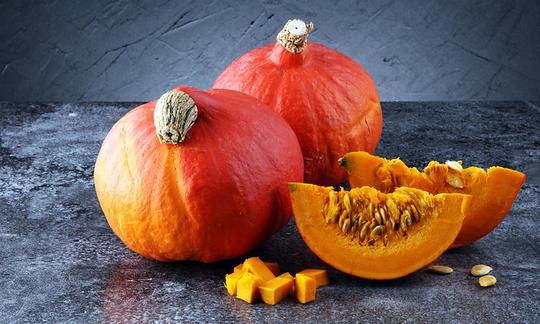

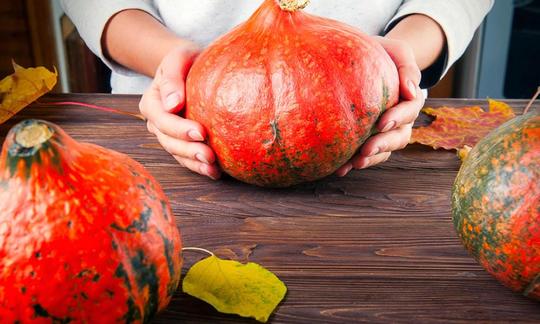

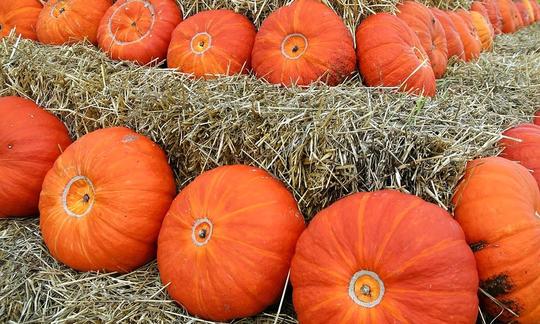

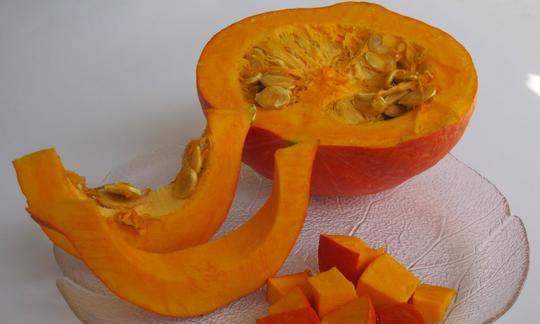

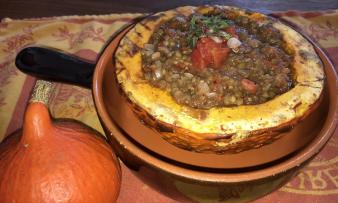
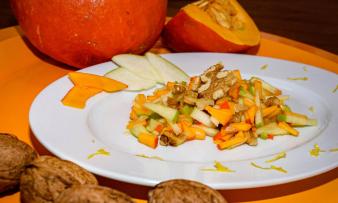
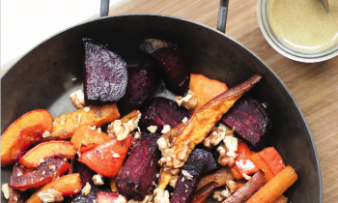





Comments